Numerical Simulation Research on Thermoacoustic Instability of Cryogenic Hydrogen Filling Pipeline
Abstract
1. Introduction
2. Numerical Model
2.1. Model Description and Simplification
2.2. Governing Equations
2.2.1. Continuity Equations
2.2.2. Momentum Equation
2.2.3. Energy Balance Equations
2.3. Boundary Condition
3. Model Validation
3.1. Grid/Time Step Independence Verification
3.2. Qualitative and Quantitative Verification
4. Results and Discussion
4.1. Basic Characteristic Analysis
4.2. Pipe Wall and Fluid Temperature Distribution
4.3. Analysis of Heat Flux Density of Pipe Wall
4.4. Research on Stability Limit
4.4.1. Influence of Temperature
4.4.2. Influence of Ratio of Hot Length to Cold Length
4.4.3. Influence of Geometric Parameters of Pipeline
5. Conclusions
- The FLUENT numerical solver was used to numerically simulate and analyze the TAO of cryogenic hydrogen, and the entire TAO process was successfully achieved. By comparing with other experiments, it is demonstrated that the model proposed in this paper can effectively calculate the oscillation characteristics of TAO and has universality for various working fluids and operating conditions.
- During the oscillation process, the temperature distribution and flow characteristics of the gas inside the pipeline exhibit significant periodic changes. The cold-end gas moves towards the end of the pipeline during the first half of the oscillation cycle. Due to its low viscosity, the cold gas is easily heated and rapidly expands. In the second half of the oscillation cycle, the expanding cold gas pushes the hot-end gas to move towards the cold end, forming a low-pressure zone, which in turn triggers the reverse flow of gas. This process is constantly repeated, leading to gas oscillation.
- Under the operating conditions described in this article, thermoacoustic oscillations can also cause additional heat leakage on the pipeline wall. The average heat flux over time flows in at 1150.1 W/m2 and out at 1087.7 W/m2, resulting in a net inflow heat flux of 62.4 W/m2. This heat maintains the duration of thermoacoustic oscillations.
- The stability limit of the system is mainly influenced by three parameters, namely the hot- and cold-end temperature ratio α, temperature gradient β, and hot- and cold-end length ratio ξ. When the critical value is exceeded, the system will oscillate.
- In practical engineering, the thermoacoustic oscillation of low-temperature hydrogen systems can be suppressed by controlling the above parameters to reach the critical range of the non-oscillation region. In addition, reducing the temperature gradient and the temperature ratio at the hot and cold ends, as well as appropriately increasing the pipe diameter and minimizing the pipe length, can weaken the amplitude of thermoacoustic oscillations.
Author Contributions
Funding
Data Availability Statement
Conflicts of Interest
Abbreviations
| D | Pipe diameter, m |
| E | Internal energy, J |
| Unit vector in axial direction | |
| Unit vector in axial direction | |
| L | Pipe length, m |
| p | Pressure, Pa |
| Heat flux, W/m2 | |
| Rg | Hydrogen gas constant, 4157 J/(kg∙K) |
| T | Temperature, K |
| Velocity vector, m/s | |
| x | Distance from the open end of the pipe, m |
| α | Temperature ratio of the hot and cold ends |
| β | Temperature gradient, K/m |
| ξ | Length ratio of the hot and cold ends |
| µ | Dynamic viscosity, Pa∙s |
| ρ | Density, kg/m3 |
| Π | Viscous stress tensor |
References
- Guo, Y.; Lei, G.; Wang, T.; Wang, K.; Sun, D. Advances in Taconis thermoacoustic oscillations. Cryogenics 2014, 2, 64–69. [Google Scholar]
- Sugimoto, N.; Shimizu, D. Boundary-layer theory for Taconis oscillations in a helium-filled tubes. Phys. Fluids 2008, 20, 104102. [Google Scholar]
- Shimizu, D.; Sugimoto, N. Numerical study of thermoacoustic Taconis oscillations. J. Appl. Phys. 2010, 107, 034910. [Google Scholar]
- Ishigaki, M.; Adachi, S.; Ishii, K. Numerical analysis of stability of thermo-acoustic oscillation in a 2D closed tube. In Proceedings of the 48th AIAA Aerospace Sciences Meeting Including the New Horizons Forum and Aerospace Exposition, Orlando, FL, USA, 4–7 January 2010. [Google Scholar]
- Ishigaki, M.; Adachi, S.; Ishii, K. Stability of thermo-acoustic oscillation in a closed tube by numerical simulation. Fluid Dyn. Res. 2011, 43, 041403. [Google Scholar]
- Lobanov, N.R. Investigation of thermal acoustic oscillations in a superconducting linac cryogenic system. Cryogenics 2017, 85, 15–22. [Google Scholar]
- Guo, Y.; Lei, G.; Wang, T.; Wang, K.; Sun, D. Numerical simulation of Taconis thermoacoustic oscillation. J. Zhejiang Univ. (Eng. Ed.) 2014, 48, 327–333. [Google Scholar]
- Jiang, W.; Huang, Y.; Zhuan, R.; Zhang, L. Trigger Conditions and Suppression Measures of Thermoacoustic Oscillations in Liquid Helium Vessels. Vac. Cryog. 2018, 24, 193–199. [Google Scholar]
- Wang, X.; Niu, X.; Bai, F.; Zhang, J.; Chen, S. Study of thermoacoustic oscillations in half-open tubes for saturated superfluid helium. Prog. Supercond. Cryog. 2022, 24, 68–73. [Google Scholar]
- Hu, L.; Liu, Q.; Yang, P.; Liu, Y. Identification of nonlinear characteristics of thermoacoustic oscillations in helium piping systems. Int. Commun. Heat Mass Transf. 2021, 120, 104999. [Google Scholar]
- Hu, L.; Liu, Q.; Chen, P.; Liu, Y. Numerical study on suppression of thermoacoustic oscillation in cryogenic helium pipeline system. Cryogenics 2021, 117, 103311. [Google Scholar]
- Xia, S.; Xie, F.; Li, Y.; Guo, W. A Numerical Study on the Settlement Characteristics of Slush Cryogenic Propellants in the Tank. J. Xi’an Jiaotong Univ. 2024, 58, 146–156. [Google Scholar]
- Gu, Y.F.; Timmerhaus, K.D. Thermal acoustic oscillations in triple point liquid hydrogen systems. Int. J. Refrig. 1991, 14, 282–291. [Google Scholar]
- Gu, Y.F.; Timmerhaus, K.D. Damping criteria for thermal acoustic oscillations in slush and liquid hydrogen systems. Cryogenics 1992, 32, 194–198. [Google Scholar]
- Matveev, K.; Leachman, J. Thermoacoustic Modeling of Cryogenic Hydrogen. Energies 2024, 17, 2884. [Google Scholar] [CrossRef]
- Shenton, M.; Leachman, J.; Matveev, K. Investigating Taconis oscillations in a U-shaped tube with hydrogen and helium. Cryogenics 2024, 143, 103940. [Google Scholar]
- Sun, D.; Wang, K.; Guo, Y.; Zhang, J.; Xu, Y.; Zou, J.; Zhang, X. CFD study on Taconis thermoacoustic oscillation with cryogenic hydrogen as working gas. Cryogenics 2016, 75, 38–46. [Google Scholar]
- Gu, Y.F.; Timmerhaus, K.D. Experimental Verification of Stability Characteristics for Thermal Acoustic Oscillations in a Liquid Helium System. In Advances in Cryogenic Engineering; Kittel, P., Ed.; Springer: Boston, MA, USA, 1994; Volume 39, pp. 1733–1740. [Google Scholar]

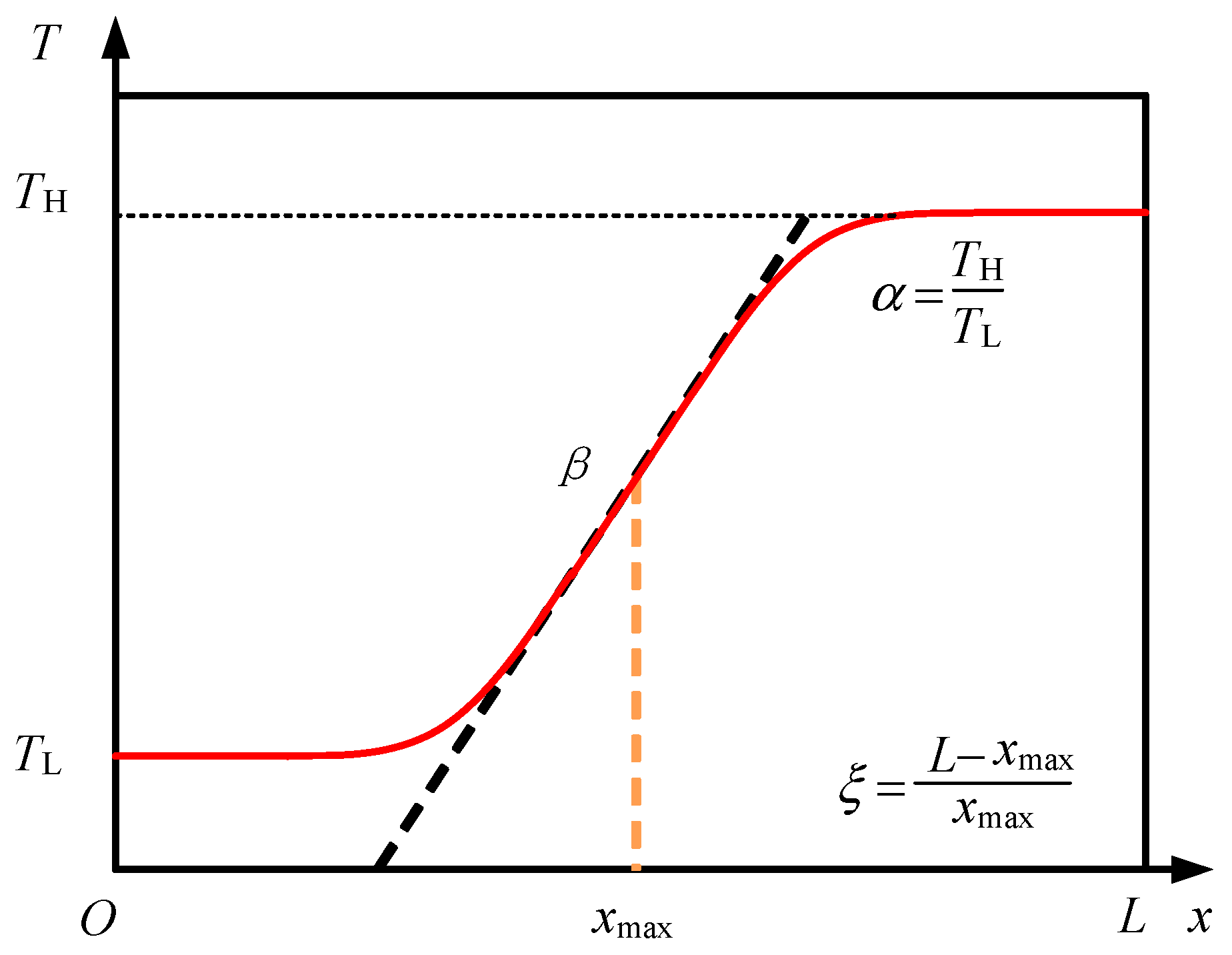
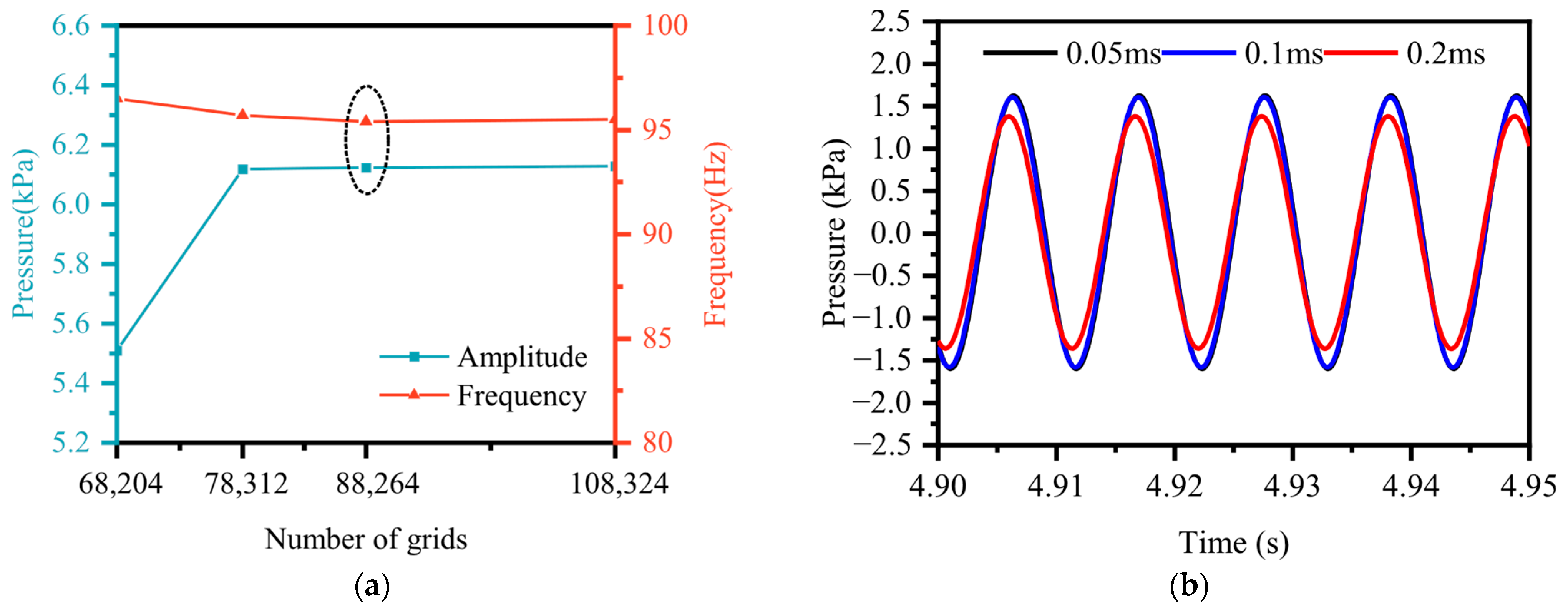
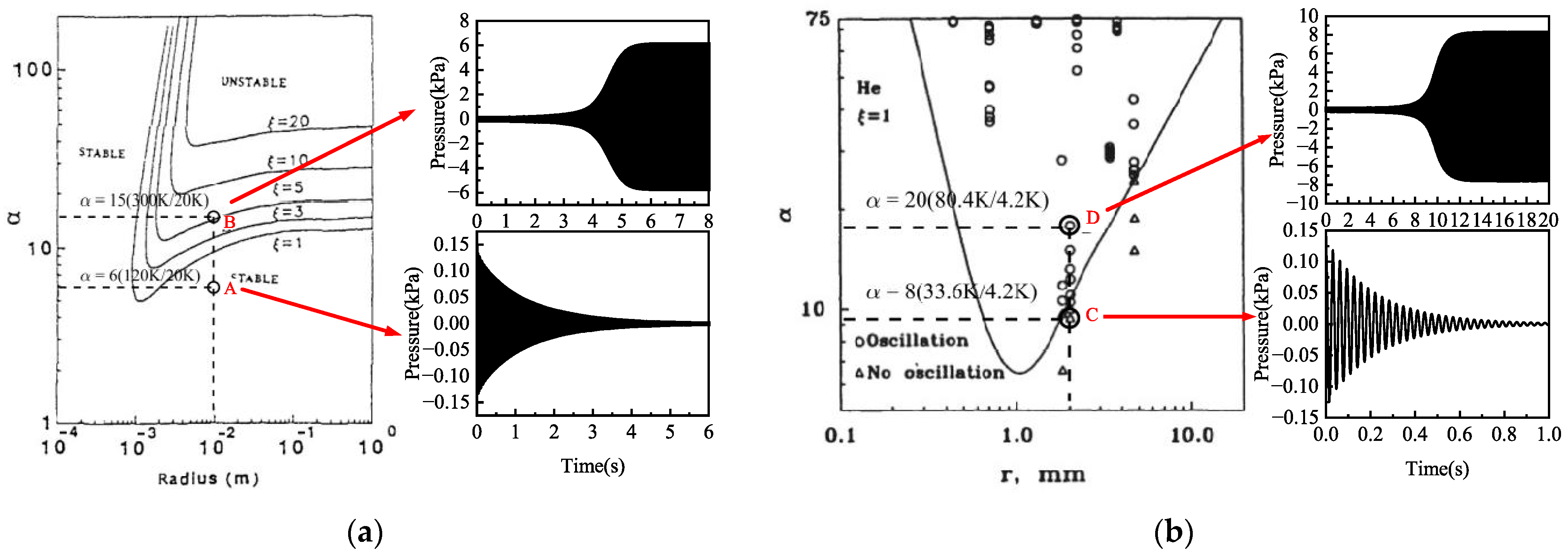
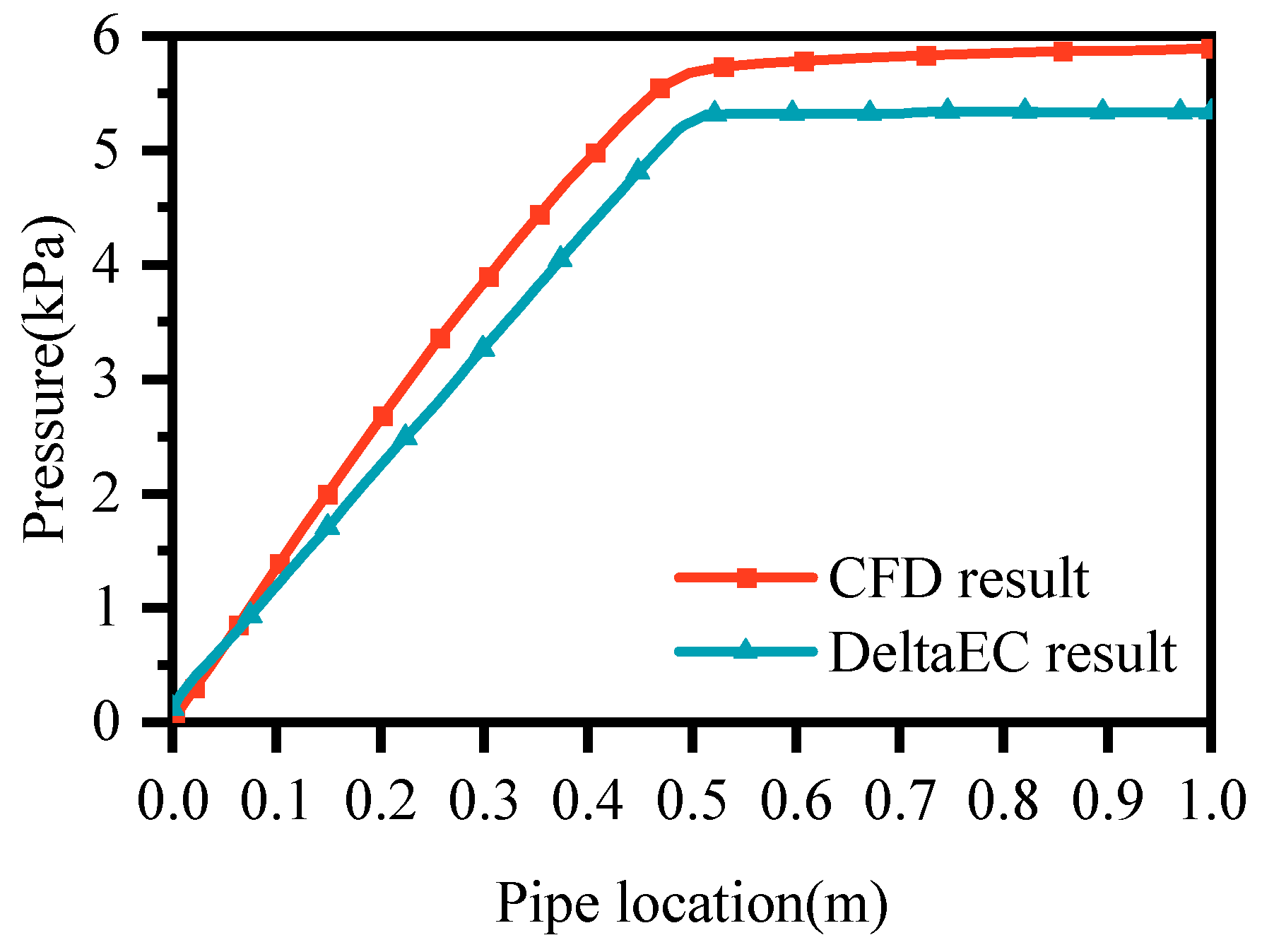

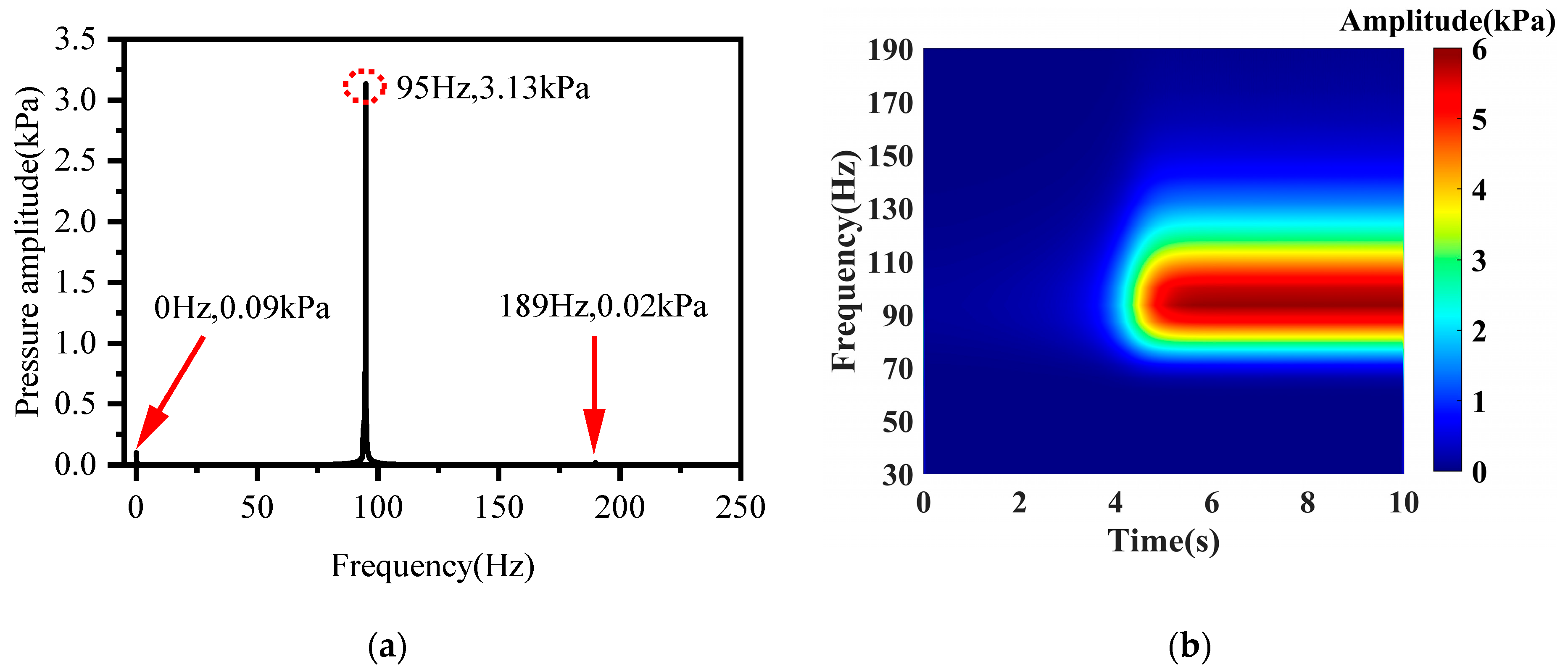
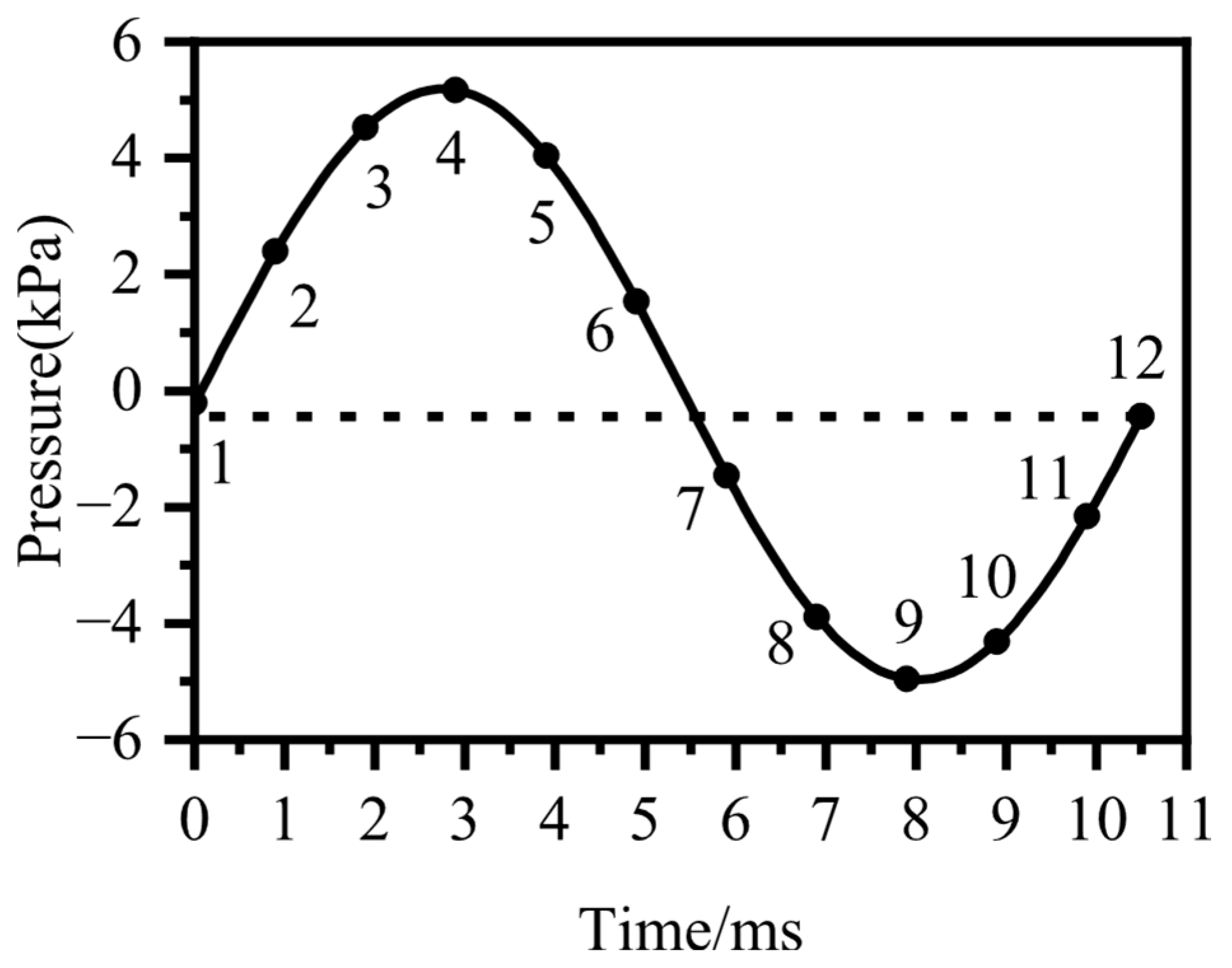
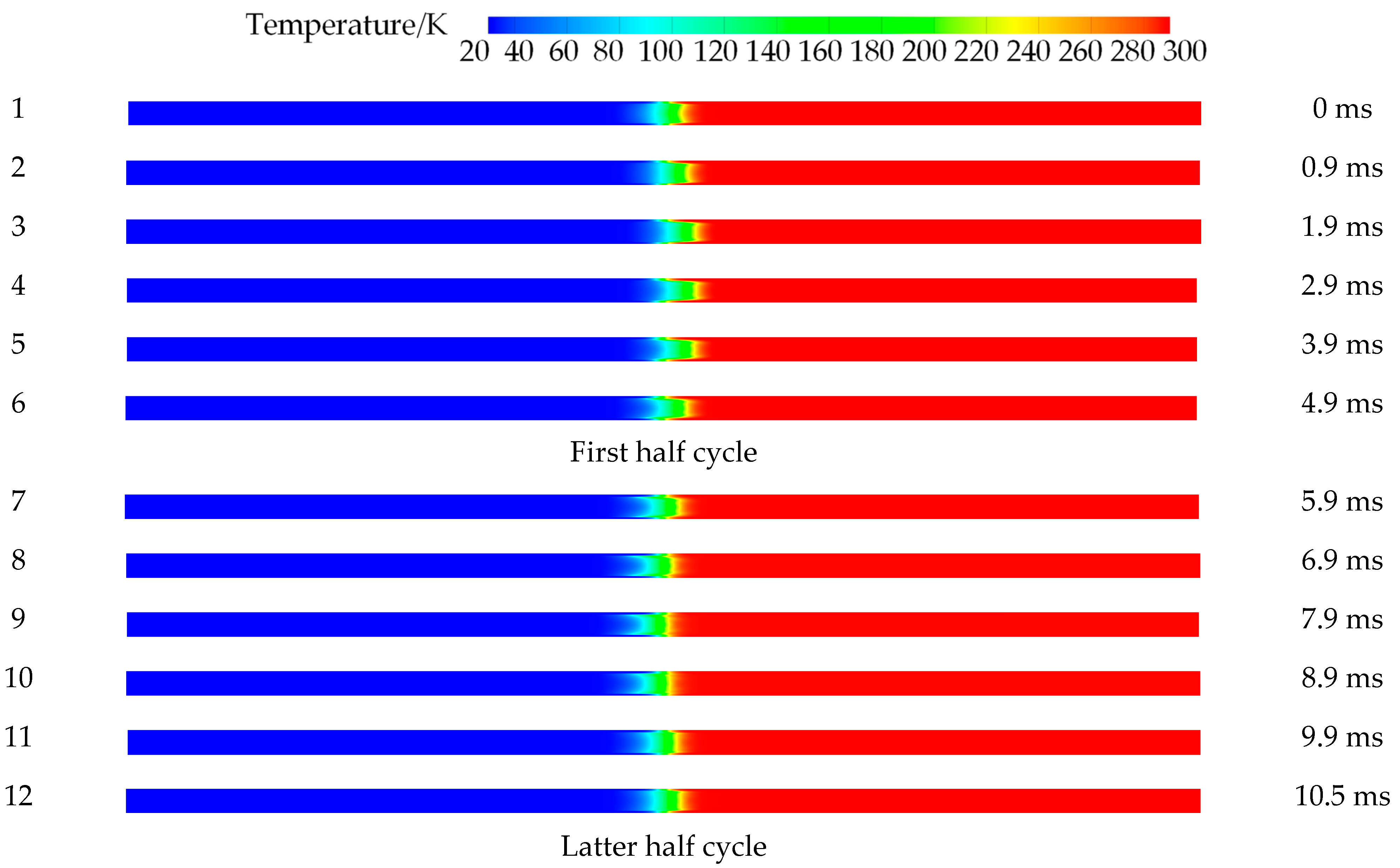
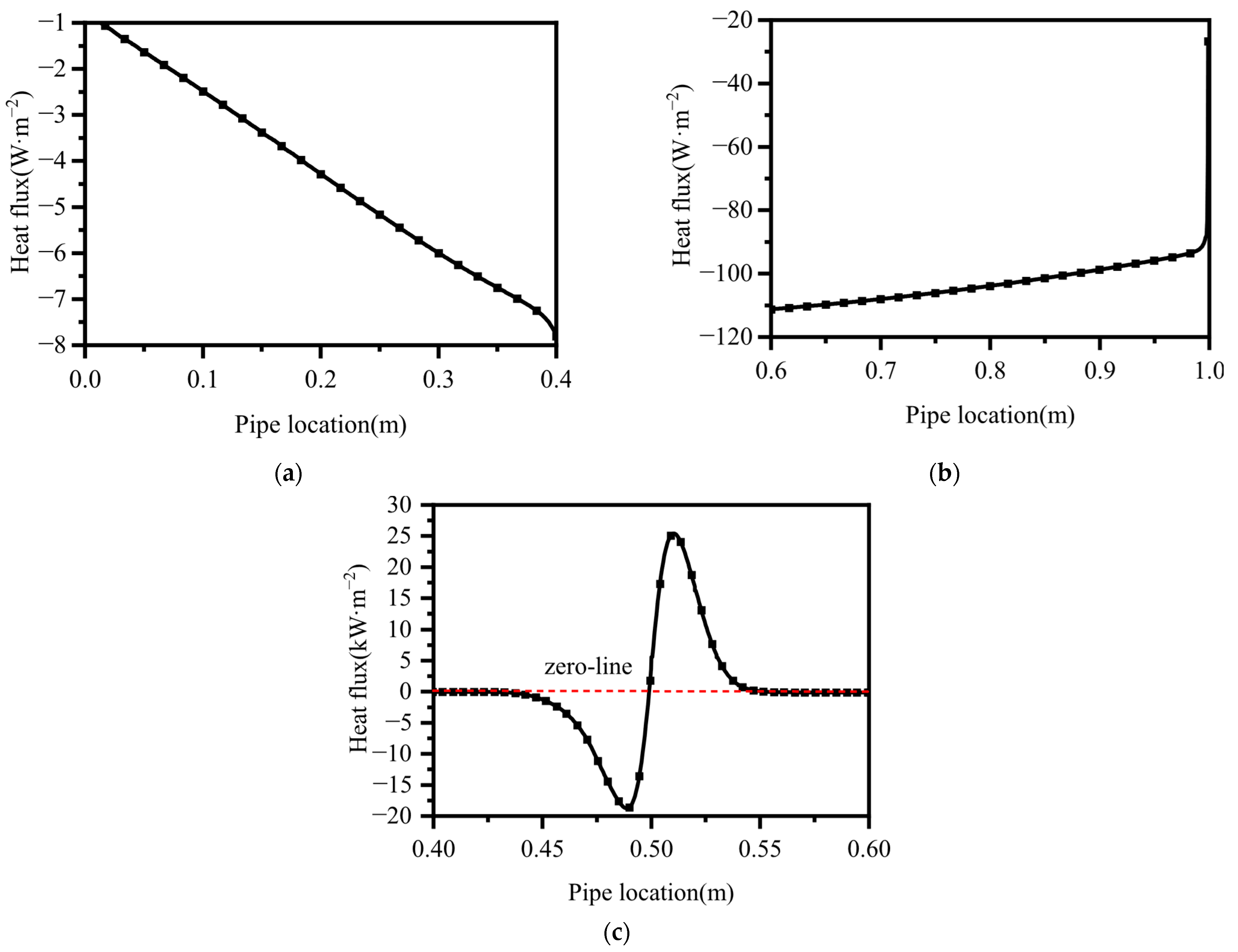
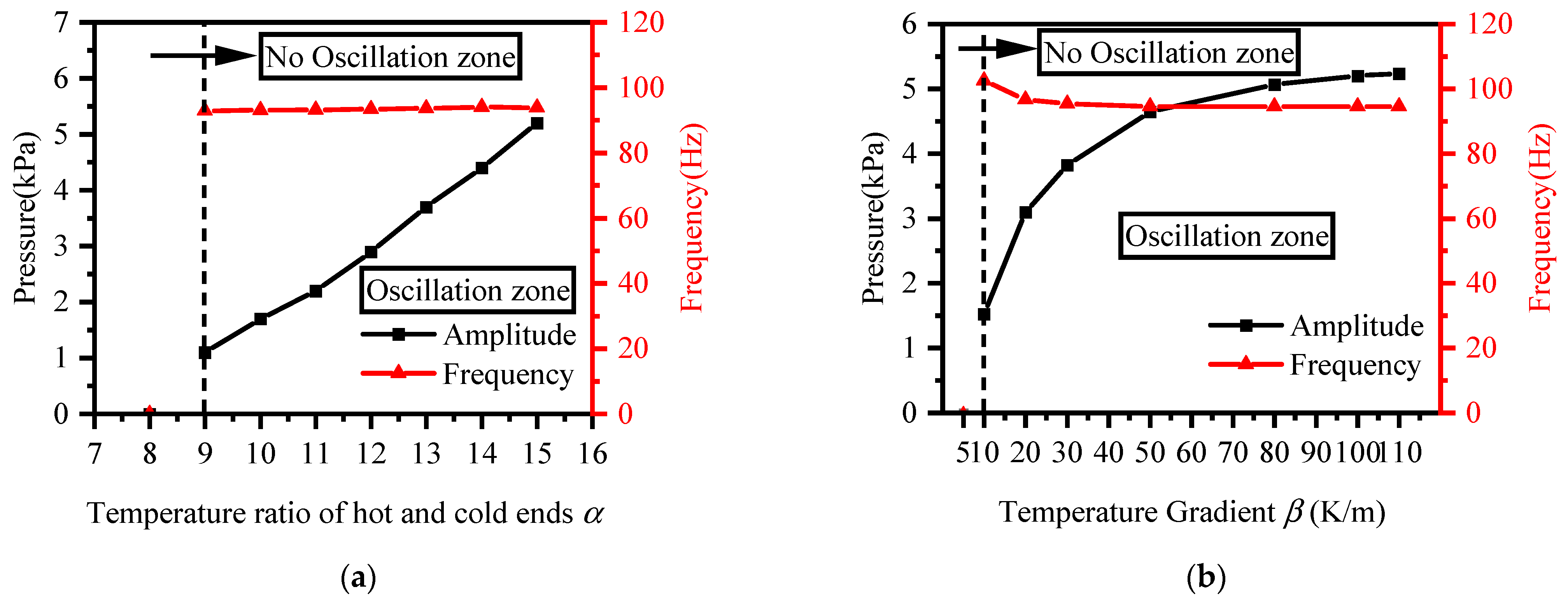
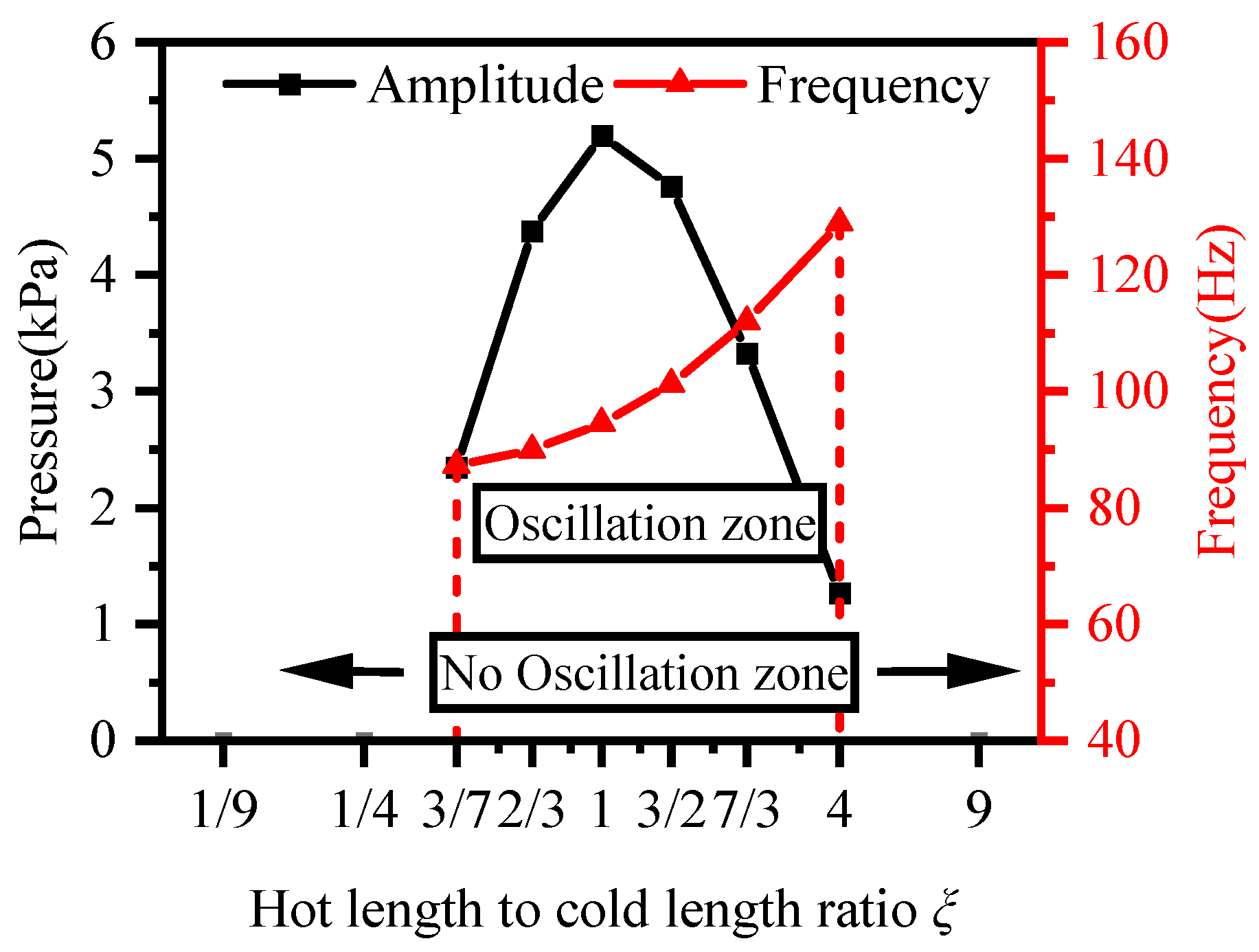

Disclaimer/Publisher’s Note: The statements, opinions and data contained in all publications are solely those of the individual author(s) and contributor(s) and not of MDPI and/or the editor(s). MDPI and/or the editor(s) disclaim responsibility for any injury to people or property resulting from any ideas, methods, instructions or products referred to in the content. |
© 2025 by the authors. Licensee MDPI, Basel, Switzerland. This article is an open access article distributed under the terms and conditions of the Creative Commons Attribution (CC BY) license (https://creativecommons.org/licenses/by/4.0/).
Share and Cite
Zhang, Q.; Ma, Y.; Xie, F.; Ai, L.; Wu, S.; Li, Y. Numerical Simulation Research on Thermoacoustic Instability of Cryogenic Hydrogen Filling Pipeline. Cryo 2025, 1, 9. https://doi.org/10.3390/cryo1030009
Zhang Q, Ma Y, Xie F, Ai L, Wu S, Li Y. Numerical Simulation Research on Thermoacoustic Instability of Cryogenic Hydrogen Filling Pipeline. Cryo. 2025; 1(3):9. https://doi.org/10.3390/cryo1030009
Chicago/Turabian StyleZhang, Qidong, Yuan Ma, Fushou Xie, Liqiang Ai, Shengbao Wu, and Yanzhong Li. 2025. "Numerical Simulation Research on Thermoacoustic Instability of Cryogenic Hydrogen Filling Pipeline" Cryo 1, no. 3: 9. https://doi.org/10.3390/cryo1030009
APA StyleZhang, Q., Ma, Y., Xie, F., Ai, L., Wu, S., & Li, Y. (2025). Numerical Simulation Research on Thermoacoustic Instability of Cryogenic Hydrogen Filling Pipeline. Cryo, 1(3), 9. https://doi.org/10.3390/cryo1030009








